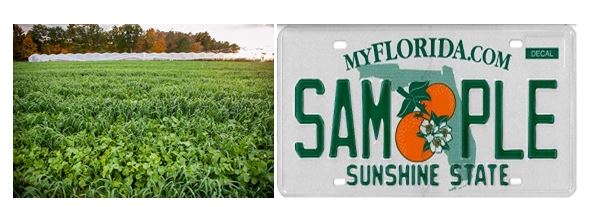Bill Spiegel – Successful Farming Staff
Farmers who want to start growing cover crops can turn to “recipes” on the Midwest Cover Crops Council website.
Free downloadable PDFs tell how and why to add cover crops into a corn-soybean rotation, says Charles Ellis, University of Missouri Extension field specialist in agricultural engineering. Ellis serves on the council’s advisory board.
The site has recipes for Missouri, Illinois, Indiana, Iowa, Michigan, Minnesota, Nebraska, and North Dakota. Download the publications at mccc.msu.edu/getting-started/cover-crop-recipes.
“Planting a cover crop ahead of a soybean cash crop is often the easiest way to introduce cover crops into your rotation,” Ellis says.
One of the Missouri recipes, MU Extension publication MX81, looks at cereal rye, which proves to be a good choice before soybeans because typical fall conditions in Missouri provide a suitable planting window for that cover crop, he says. But Ellis discourages cereal rye before corn for beginning cover crop growers because it requires changes in corn nitrogen management and other adjustments.
Instead, the council suggests a two-way mix of oats and radishes for spring termination or a two-way mix of oats and crimson clover for better erosion control and living roots in the spring before corn. MU Extension publication MX82 details how to do this.
The cover crop recipe guides tell how to plan for cover crops, choose corn and soybean hybrids, and purchase seed. They also explain crop sensitivity to selected hybrids and effects of residual herbicides. The simple three-page guides tell what fieldwork must be done in fall and spring for best results and provide details such as seeding rates and nutrient applications.
In addition to step-by-step suggestions, the guides offer links to resources. Ellis and Rob Myers, MU adjunct associate professor of plant sciences, and other MU faculty and MCCC council members contributed to the guides.
McKnight Foundation funded the project.
______________________________________________________________________________________________________________________________________
Florida Wants a Honey Bee License Plate
Last spring freshman state Rep. Melony Bell introduced a bill to help raise awareness of the risk to Florida’s honey bees — a vital link in our food chain.
The Fort Meade Republican wanted to create a specialty license plate whose sales would generate funding for the Florida State Beekeepers Association to use for promoting honeybee research and related educational and husbandry programs. The bill passed one subcommittee unanimously but went no further.
Bell has revived her license-plate bill for 2020. For the sake of the bees, and for the continued health of our nation’s agricultural sector, we hope it creates more of a buzz this time.
The situation with bees, which are important in pollinating crops, is a mixed bag.
In March 2018, the U.S. Department of Agriculture reported that the number of managed bee colonies across the U.S. has remained relatively stable since 1996. But beekeepers have been concerned about the winter extinction rate, which since 2007 has doubled the historic average. One group that tracks such trends, the Bee Informed Partnership, noted in June that last winter’s colony kill-off was the worst in the 13 years it has followed the issue.
Last week WUSF offered a report outlining threats to honey bees. One affliction for bees is the varroa mite, an insect that infests colonies and may figure into “colony collapse disorder,” a condition that the USDA says figures prominently in beekeepers’ winter woes.
Another factor is the growing use of pesticides called neonicotinoids, or “neo-nics.” The U.S. Environmental Protection Agency considers neo-nics to be very effective in controlling pests that threaten a wide array of crops, according to WUSF. But they are also highly lethal to pollinators, like honey bees.
A spokesman for the Natural Resources Defense Council told WUSF that 40% of bees die off each year because of pesticides, which is three times the historic norm, and neo-nics, sued of which began 25 years ago, are responsible for almost all of that increase. And the EPA has just green-lighted a new neo-nic without requiring a study of its effect on pollinators, prompting legal action from the beekeeping industry.
Despite that, though, Jamie Ellis, who runs the University of Florida’s bee research lab, says the varroa mites are far more threatening to bees, relative to pesticides, WUSF reported.
As the USDA notes, “Pollinators, most often honey bees, are responsible for one in every three bites of food we take, and increase our nation’s crop values each year by more than $15 billion.”
Back in June NPR observed that beekeepers have become an “essential cog” in keeping our farms and groves going because wild insects cannot keep pace. But they face limits in what they can do to fend off these threats.
That’s where Rep. Bell’s license-plate idea comes in. It may not provide a definitive solution to these ills. But it can help boost researchers’ efforts to address them. Hence, we encourage more lawmakers to “bee” involved in her cause next year.







